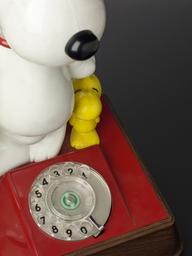

Speech memory board from System X Automatic Announcement Subsystem, 1979-1985
- Made:
- 1979-1985 in United Kingdom






Speech memory board from System X Automatic Announcement Subsystem, developed by the Post Office, British, 1979-1985.
System X was British Telecom's first digital switching exchange for telephones. It was thought up by the Advisory Group on System Definitions, an alliance involving the Post Office and industry groups, set up in 1968. The system itself was designed in collaboration between GEC, Plessey and STC - the three major suppliers to the Post Office. The first System X exchange came into service on July 1 1980 at London's Baynard House. It was called the 'great white hope' for British manufacturers, with the intention of worldwide sales, but unfortunately development took too long, and manufacturers looked elsewhere. Nevertheless System X became standard in Britain and remained in widespread use well into the 21st century.
Details
- Category:
- Telecommunications
- Object Number:
- 1985-603
- Materials:
- plastic (unidentified), metal (unknown) and copper alloy
- Measurements:
-
overall: 20 mm x 286 mm x 345 mm, .75 kg
- type:
- computer memory
- credit:
- Donated by the British Telecom Research Laboratories




